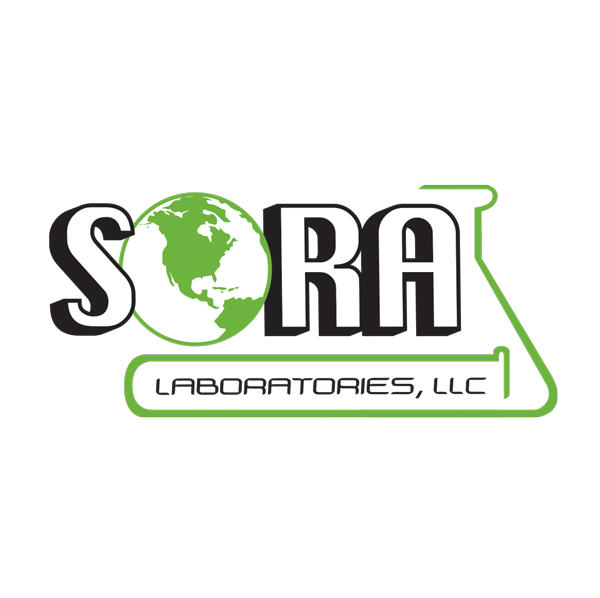Over the last couple of months our focus has been on the bad “bugs” that could be present in your supplements. However, not all bugs are bad! Probiotics are the good “bugs” that could be your consumer’s best friend. Probiotics occur naturally in our body, but certain factors such as antibiotics, stress, poor diet, and even aging can diminish their presence and our body. When this decrease occurs our bodies need a bit of a boost to keep a healthy balance. You may find yourself asking why these little organisms living in mainly our intestines are so important to our bodies. This is because they enhance the intestines’ barrier function, compete with and suppress pathogenic bacteria, and modulates and stimulates immune system activity.1 So, when your consumers turn to your product to help provide the much needed probiotic boost are they receiving the product they think they are?
When you begin the discussion of probiotic testing, it can be a very worrisome topic; however, SORA Labs is here to help you out! Many probiotic testing methods are very vendor specific. This means that where and who you purchase your probiotic raw materials from is a major deciding factor as to how they are tested. Due to the many strains and their unique characteristics, there is not a single method that will provide an accurate, true representation of the enumeration of multiple strains in a finished product. Once they are blended together, you can try testing each strain by the method most suitable for it; however, some overlap may occur providing inaccurate numbers. Therefore, SORA Labs recommends the testing of single strain raw ingredients to ensure that you are putting what you think you are into your products. SORA Labs has the capabilities of performing many of the vendor methods and we are always expanding our testing capabilities. If you have a probiotic product that needs to be tested, please feel free to contact us!
Reference:
1: Fedorak RN, Madsen KL. Probiotics and the management of inflammatory bowel disease. Inflamm Bowel Dis. 2004 May;10(3):286-99. VIA http://www.lifeextension.com/magazine/2009/1/optimize-digestive-health/page-01
2: http://www.webmd.com/digestive-disorders/features/what-are-probiotics
Are you testing your raw ingredients?
In recent years, the FDA and other governing bodies have been tightening regulations for dietary supplement companies. Seen in the recent attacks by the NY attorney general and other agencies, they have criticized companies for mislabeling ingredients. It was unfortunate for the companies on the receiving end of these attacks because the agencies used non-traditional testing methods, which have not been proven to be effective at identifying the purity of raw ingredients. As a result, these companies faced loss of consumer trust in their products and it undoubtedly affected their bottom line. So how can you protect your company from events like this? Testing your raw ingredients is the best way to address this concern!
According to 21 CFR 111.120, companies are required to determine whether all components, packaging, and labels conform to specifications that are established in 21 CFR 111.70 (b) and (d). These specifications are provided for each component (raw ingredient) that is used and must be established as follows:
(b)
- You must establish an identity specification.
- You must establish component specifications that are necessary to ensure that specifications for the purity, strength and composition of the dietary supplements manufactured using the components are met.
- You must establish limits on those types of contamination that may adulterate or may lead to adulteration of the finished batch of the dietary supplement to ensure the quality of the dietary supplement.
(d)
You must establish specifications for dietary supplement labels (label specifications) and for packaging that may come in contact with dietary supplements (packaging specifications). Packaging that may come into contact with dietary supplements must be safe and suitable for its intended use and must not be reactive or absorptive or otherwise affect the safety or quality of the dietary supplement.
If you pay close attention to (b) you can see how the testing of your raw ingredients is mandatory. The minimum requirement is for ID, purity and strength to ensure your raw ingredients are what you are claiming. This documentation is also very important when you test your finished product and notice matrix interference occurring after testing has been completed. Matrix interference can cause certain analytes to be much higher or much lower than your anticipated label claim. When you have documentation of the quality of your raw ingredients, it allows for a written documentation detailing the unexpected results for reference if your product is ever under scrutiny.
What went wrong?
In the wake of the CBC retraction of the November 2015 dietary supplement report due to testing inaccuracy, questions are being asked about the function and processes of third party laboratory With so many different labs offering testing, how is one to know if the accepted practices are being followed? What makes a lab trustworthy in their methods? What could have happened that caused the tests to go wrong?
What is required of a lab to receive their accreditation? There are many factors that go into receiving an ISO 17025 accreditation. These are just a few examples of some practices that must be followed for a lab to be accredited:
For a lab to be ISO 17025 accredited, they are required to do proficiency testing, which means testing the same sample by multiple analysts, preferably between different labs and comparing the RSD% (Relative Standard Deviation) of the results. There are tight ranges for these results that show proficiency.
ISO 17025 accreditation is specific to certain lab tests and not all tests that a lab runs are within their ISO 17025 scope of accreditation. The ISO 17025 certificate for each lab lists the accredited tests. This accreditation is considered to be the lab’s expertise.
The Preventive/Corrective Action system (PCAR or CAPA) is used for any lab issue to improve all company practices. ISO 17025 accreditation requires continual improvement, so when a lab error is found, a PCAR is then generated to solve the problem for future
Out of Specification (OOS) results require a lab investigation as part of the ISO 17025 guidelines and Good Lab Practices (GLP). Each lab is responsible for accuracy, so when results are out-of-spec, the lab will double-check many things including: sample handling practices; reagent expiration dates; if equipment calibration is up-to-date; dilution factors; and testing calculations. In addition, the lab should verify that the method was followed as written and if it was valid for the sample matrix. Along with other considerations, it is important to ask if the sample appeared to go fully into the solution? If a lab error is found, retesting and retraining should be conducted. Since this investigation takes additional time, samples that are OOS will be delayed due to this process.
What steps should a lab take to make sure that their results are accurate? What are some suggestions for avoiding mistakes?
SORA double-checks the results of each testing run against a known “known or reference standard.” For enzyme activity assays, this standard is just an extra sample of “known value” included the run to ensure that it is being performed according to procedural guidelines. This result is recorded and the RSD% is calculated. The result must fall within a range set by the validating method for the entire run. If the known or reference standard falls outside of the given range, the run is considered invalid and all results are thrown out—invalid results are not reported to the customer.
Labs should follow the practice of validating the method on a new sample matrix. This can be a long expensive process, with testing often expected on a fast turn-around time, so this process is rarely done. A quick check for method performance can be done on the new sample matrix using “spike recovery” Spike recoverytesting involves adding a known amount of the chemical you are looking for in the sample matrix and then seeing what your method recovers on the matrix. The results can help you decide if the method will work on the new sample matrix.
Issues can also occur during testing if the wrong method was used to run the sample. There may be several potential methods of testing for the same compound so it is always a best practice to ensure that the correct testing method is being used before beginning.
As Stuart Phillips, a scientist at McMaster University who studies the effects of protein supplements on humans, says: “Like anything else in life, I think when a lab gets something wrong, [it can happen for a number of reasons like] human error, contaminated dirty glassware, [or] machine malfunction.” Though things could potentially go wrong, taking the proper precautions and following the accredited procedures will help keep mistakes to a minimum and help ensure correct testing results.

